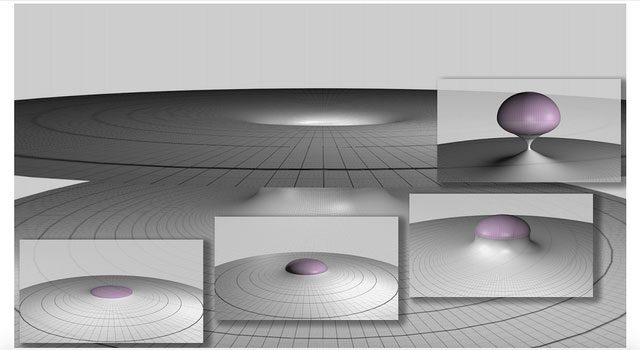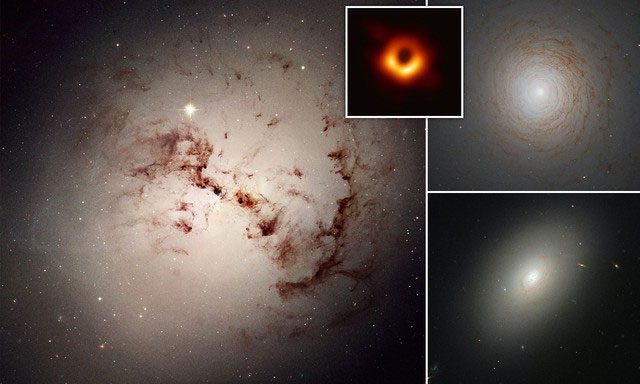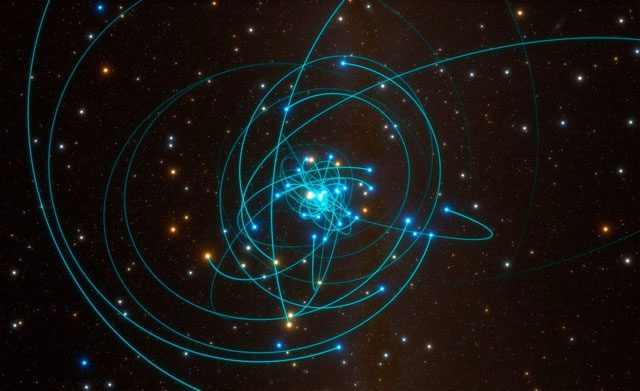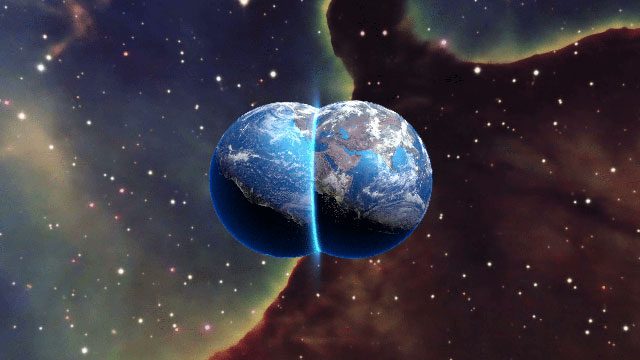Is Our Universe a Black Hole? This is a challenging question with no definitive answer, yet many astronomical phenomena suggest that this notion is not impossible.
Some scientists speculate that humans could be living inside a gigantic black hole, and the universe we know is a nascent cosmos nurtured within this black hole. Even more astonishingly, some researchers believe there could be an independent universe within each black hole. So, what have scientists discovered?

Many scientists suspect that humans could live inside a giant black hole. (Illustrative image).
Einstein’s General Relativity from 1915 shines like a bright star, illuminating the realm of physics. This theory not only predicts the curvature of spacetime but also reveals a profound connection between mass and gravitational force.
The German astrophysicist Karl Schwarzschild utilized this theory to calculate the vacuum solution. Under certain extreme conditions, spacetime can be infinitely distorted to form a point of infinite density and volume, known as a singularity.
Surrounding the singularity, space and time seem to be twisted tightly by an invisible hand, forming an insurmountable boundary – the event horizon. The event horizon resembles a bottomless pit from which even light cannot escape, hence scientists refer to it as a black hole. At the depths of a black hole, traditional physical laws cease to apply, and concepts of time and space become blurred. This prevents us from observing what occurs within a black hole and calculating the strange phenomena that may happen there.

Black holes are formed by the internal collapse of massive stars at the end of their life cycles. (Illustrative image).
As scientists continue to delve deeper into black holes, we gain a better understanding of these cosmic phenomena. Generally, black holes can be divided into two main types: stellar black holes and primordial black holes. Stellar black holes are formed by the internal collapse of massive stars at the end of their life cycles. Not all stars evolve into black holes; only those with masses greater than 25 times that of the Sun can form a black hole.
When a massive star exhausts its nuclear fuel, the inward gravitational force is no longer balanced by the outward push of nuclear fusion reactions, causing the star’s interior to collapse. If the star is sufficiently massive, this contraction creates an incredibly dense object known as a black hole.
The other type of black hole is the primordial black hole, which is quite different in formation compared to stellar black holes. Primordial black holes may originate from the inflationary period following the Big Bang. During this time, the universe underwent extremely high temperatures and energy, and the density of matter reached critical limits. In such cases, certain regions may collapse directly, forming primordial black holes.

Primordial black holes may originate from the inflationary period following the Big Bang. (Illustrative image).
In addition to these two types, Einstein’s theory also predicts a third type of black hole that contains a singularity, which is considered the origin of the Big Bang. This leads to an intriguing hypothesis: Could our universe be a gigantic black hole?
According to modern scientific research, our universe was born from a Big Bang approximately 13.8 billion years ago, originating from a very small singularity that contained all matter and energy. This has led some scientists to speculate that our universe could indeed be the interior of a black hole.
In the quest to explore the universe’s origins, scientists have discovered an interesting phenomenon: the actual size of the universe’s horizon is very close to the event horizon of a black hole, within which even light cannot escape. Similarly, the theory of cosmic expansion describes a rapidly expanding universe post-Big Bang, where spacetime expands faster than the speed of light, preventing us from seeing or observing beyond the universe.
By observing and calculating the universe, astronomers have estimated the total mass of the universe to be approximately 10^54 kg. Substituting this mass into the Schwarzschild radius formula, we can see that the Schwarzschild radius of the universe is approximately 150 billion light-years, meaning the diameter of the universe is about 300 billion light-years.
For comparison, the diameter of our currently observable universe is about 93 billion light-years. Based on these observations, some scholars have proposed a hypothesis: We could be living inside a black hole.
Years ago, the renowned physicist Hawking proposed the hypothesis of “nascent universes,” which has been refined over time. So, what does “nascent universe” mean? In simple terms, it suggests that our universe was born from a larger parent universe and contains countless child universes within this parent universe. Hawking believed that there could be a nascent universe inside every black hole in the universe, which implies similar events occur inside all black holes in our universe.

The total mass of the universe is approximately 10^54 kg.
Moreover, whenever a new black hole is formed, it could symbolize the birth of a new nascent universe. This means that the universe could be infinite; one could even say that a new child universe is created every second. The critical value of a black hole is analogous to the radius of our currently observable universe.
You might think this is merely a coincidence, but for scientists who believe we live inside a black hole, this is considered further evidence supporting the “nascent universe hypothesis.” If there is a nascent universe inside each black hole, it also implies that every black hole could harbor life.
Considering the infinite number of black holes, this also suggests that there must be countless forms of life and civilizations within the parent universe, and humans are just one insignificant existence among them. In this way, concepts such as the multiverse and parallel universes could also be clearly explained. Einstein previously suggested that black holes could serve as conduits between universes. Does this mean that to reach a parallel universe or different dimensions of time and space, we simply need to enter a black hole?

If there is a nascent universe inside each black hole, it means every black hole could harbor life. (Illustrative image).
Perhaps one day in the future, when humanity can reach the edge of the universe, we will have the opportunity to explore the truth about the cosmos. Or when human technology advances to the level of exploring black holes, we may resolve all these mysteries.
However, currently, there is no compelling evidence affirming whether the universe is indeed a gigantic black hole. Although we still face many unanswered mysteries about the nature of the universe, this does not prevent us from appreciating its majestic vistas. Is our universe a black hole?


















































